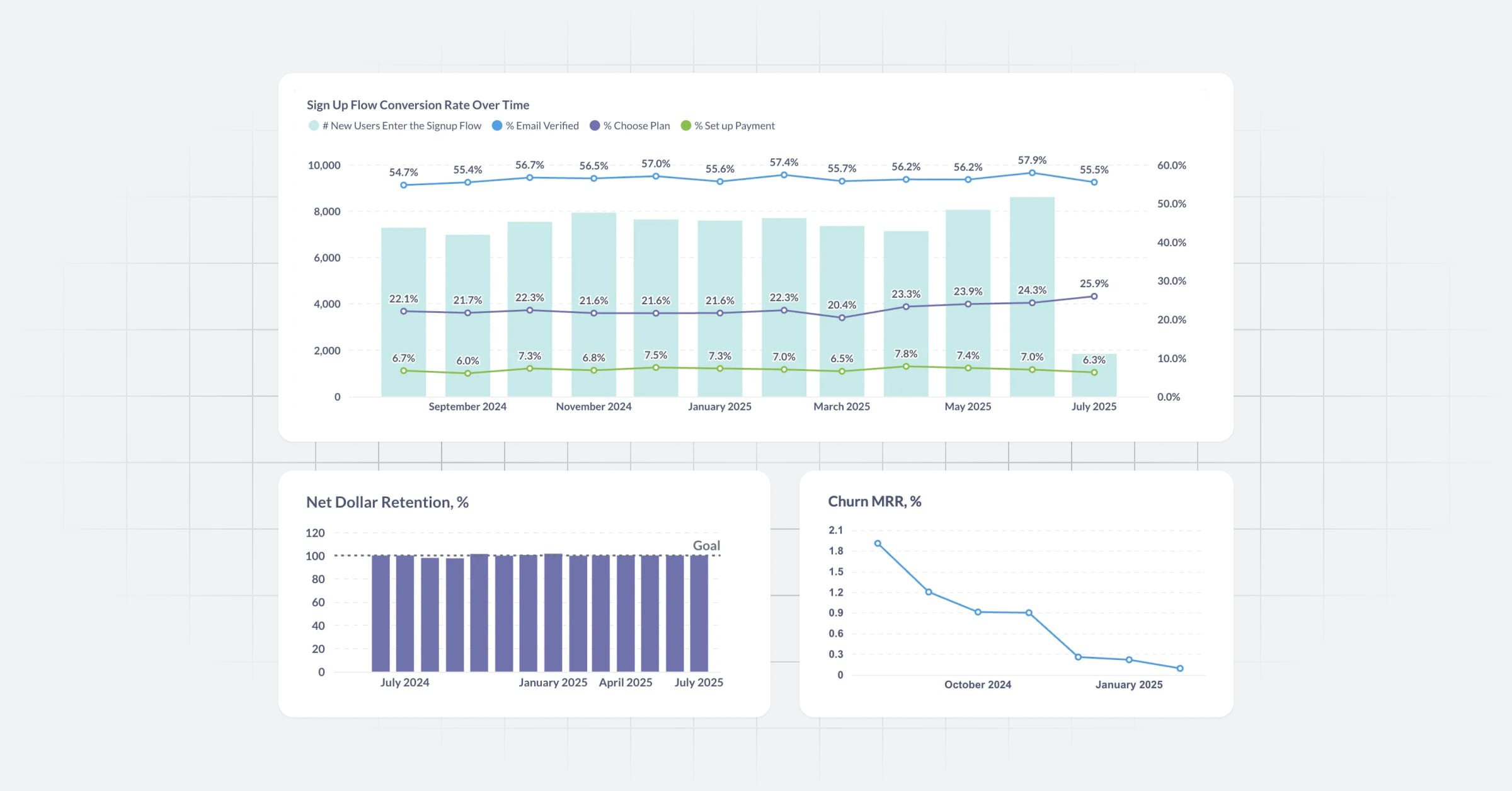Uploading data
If an admin has set up uploads, you can upload CSV data by clicking on the Upload icon in the top right of the collection page.
![]() .
.
Create, append, or replace models with uploads
When you upload a CSV file, Metabase may ask to select a destination for that upload (depending on whether there are other uploads).
If your CSV has the same columns as a model from a previously uploaded file, you can append data to that model. Otherwise, you can create a new model. if you want to:
- Create a new model
- Append to an existing model created by an upload
- Replace the data for an existing model created by an upload
Metabase will create a model that contains that CSV data, as well as the model’s underlying table.
Uploads will only be available if your admin has enabled uploads for your Metabase, and you’re in a group with Unrestricted access to the schema used to store those uploads. See Uploading data.
Appending to a model created by an upload
You can upload additional CSV data to an existing model created by a previous CSV upload.

The uploaded CSV must have the same column name, order, and type as the columns in the model. Metabase will look for a header row to check that the column names are the same. So if you split a large CSV into multiple CSVs, make sure to include header rows for all of the files.
When appending, Metabase will simply insert the rows into the underlying table, which will update the model that sits on top of that table. If you have duplicate rows from one upload to the next, Metabase will preserve those duplicate rows.
The upload icon will only be visible on models created by uploads.
Replacing the data of an uploaded model
Instead of deleting a model and recreating it, you can replace the underlying data with an updated spreadsheet.
Like appending to uploaded models, replacing the uploaded CSV data with a new CSV file requires the columns and headings to match.
If you delete the uploaded table, you won’t be able to replace the model’s data.
Primary key auto-generation
When you upload a CSV, Metabase will create an a unique primary key column, called _mb_row_id, as the first (left-most) column of the uploaded CSV table. This _mb_row_id column will contain automatically generated integers. Metabase will also ignore any columns in the upload that have a name that will be in the database with the same name as the auto-generated primary key column (e.g., _MB row-ID in the CSV will be _mb_row_id or _MB_ROW_ID in the database).
If you don’t want this autogenerated ID column, you can always remove the column from the model Metabase created. Visit the model, click on the info i icon, then Model details. From the model details page, click the Edit definition button. In the Data section of the query builder, click on the down arrow next to the table, deselect the added ID column, and save your changes.
Data type errors
Metabase will try to guess what the data type is for each column, but if some entries are not like the others, Metabase may not guess the type correctly. For example, if you have a column that starts with integers like 100, 130, 140, then later on a float 105.5, Metabase may reject the upload. To fix this, you’ll need to use spreadsheet software to adjust the formatting so that all the integers are formatted as floats (e.g., 100.00, 130.00, 140.00 and so on) before uploading.
File size limit
CSV files cannot exceed 50 MB in size.
While Metabase limits uploads to 50 MB, the server you use to run your Metabase may impose a lower limit. For example, the default client upload limit for NGINX is 1 MB. So you may need to change your server settings to allow uploads up to 50 MB. People on Metabase Cloud don’t have to worry about this.
If you have a file larger than 50 MB, the workaround here is to split the data into multiple files and append those files to an existing model. Each file that you upload to Metabase must have a header row (the names of the columns), so if you’re splitting one file into multiple files, you’ll need to add header rows to each file.
Date formats
For now, Metabase only recognizes dates and datetimes from strings in uploaded CSVs with the following formats:
Dates
Represents the year, month, and day without time information.
Format: yyyy-MM-dd
Example: 2023-01-01
Datetimes
Represents the year, month, day, hour. Minutes, seconds, and fractional seconds are optional.
Format: yyyy-MM-ddTHH:mm:ss.SSS. The “T” separator could also be a space (“ “).
Examples:
2023-01-01 002023-01-01 00:00:00.0002023-01-01T00:00:00.0002023-01-01 00:00:00.0000000
Datetimes with offsets
Represents the datetime with an offset from Coordinated Universal Time (UTC). Minutes and seconds in the offset are optional.
Formats:
Datetime formats:
yyyy-MM-ddTHH:mm.yyyy-MM-ddTHH:mm:ss.yyyy-MM-ddTHH:mm:ss.SSS(and any number of S’s).
The “T” separator could also be a space (“ “).
Offsets:
Z(for UTC)+HHor-HH+HH:mmor-HH:mm+HH:mm:ssor-HH:mm:ss
Examples:
2023-01-01 00:00:00+00:00:002023-01-01T00:00:00+00:00:00
Deleting models and tables created by uploads
Deleting models created by uploads
Deleting uploaded tables is only available on Pro and Enterprise plans (both self-hosted and on Metabase Cloud).
You can move a model to Trash by clicking on the three dots in the upper right and selecting Move to Trash.
For deleting models completely, see Deleting items permanently.
Deleting tables created by uploads
Deleting uploaded tables is only available on Pro and Enterprise plans (both self-hosted and on Metabase Cloud).
To delete tables created by uploads, go to Admin settings > Settings > Uploads.
Under Manage uploads, Metabase will list the tables underlying the models.
When you delete the table, Metabase will give you the option to Also send all models and questions based on this table to the trash.
Further reading
Read docs for other versions of Metabase.


